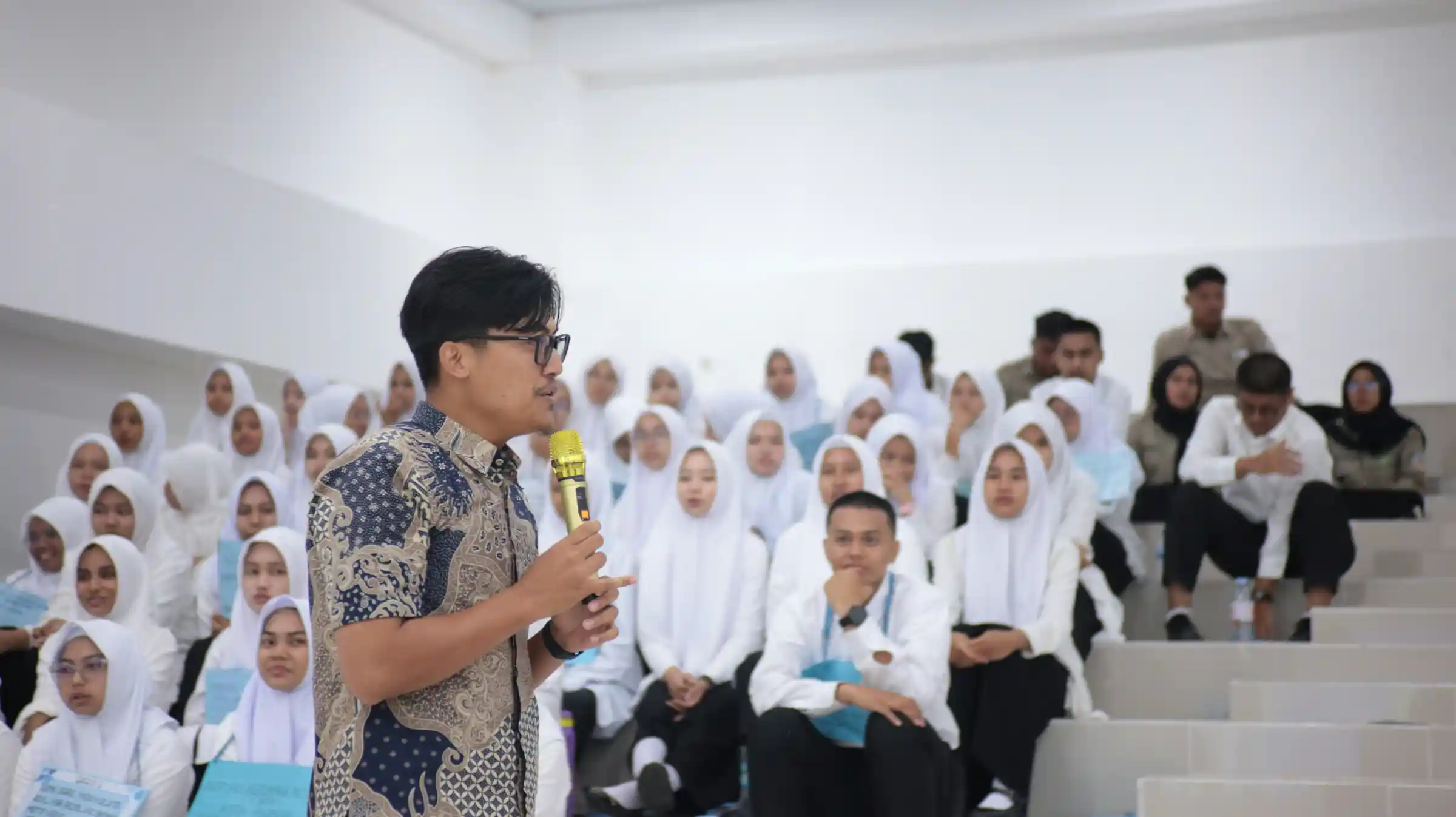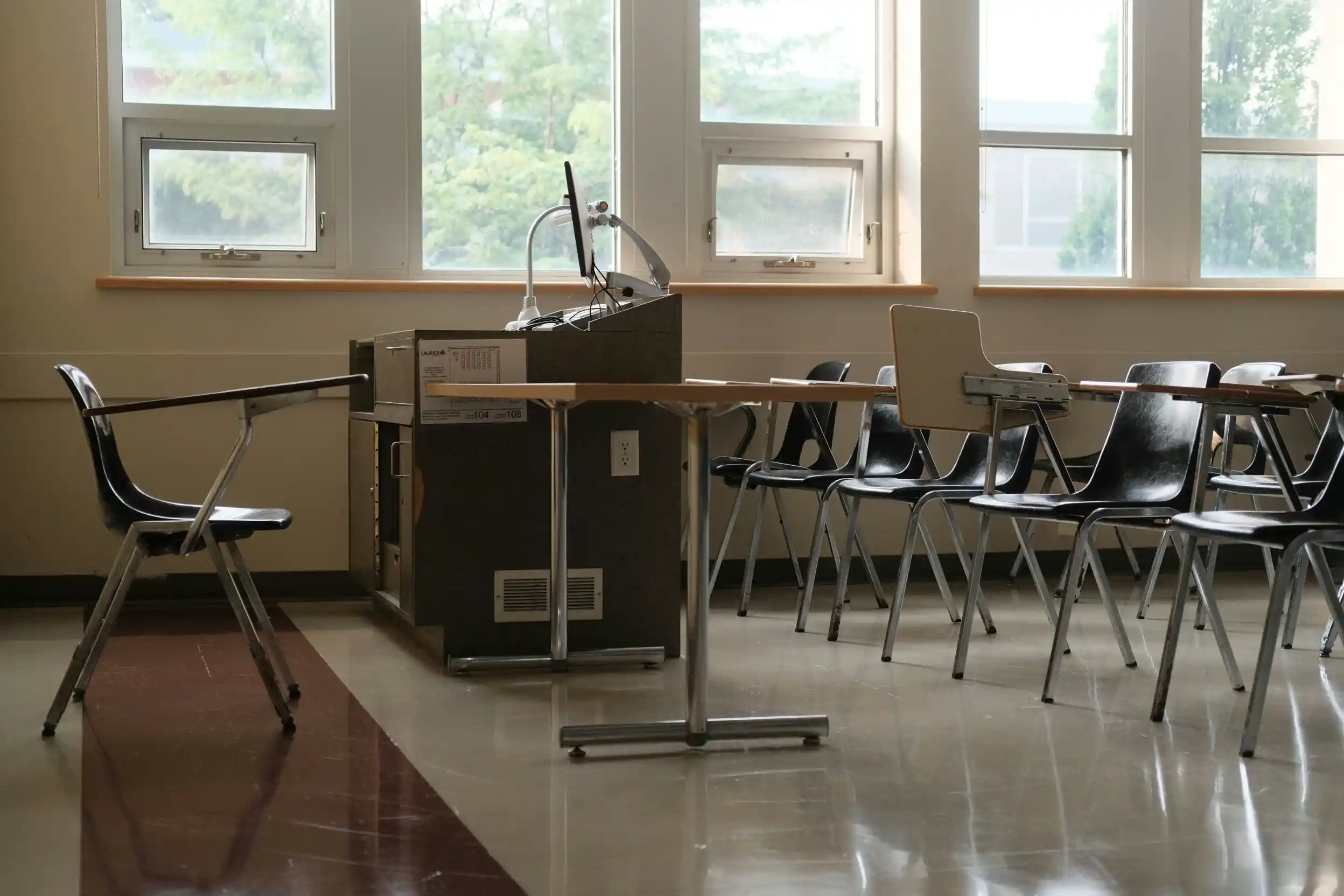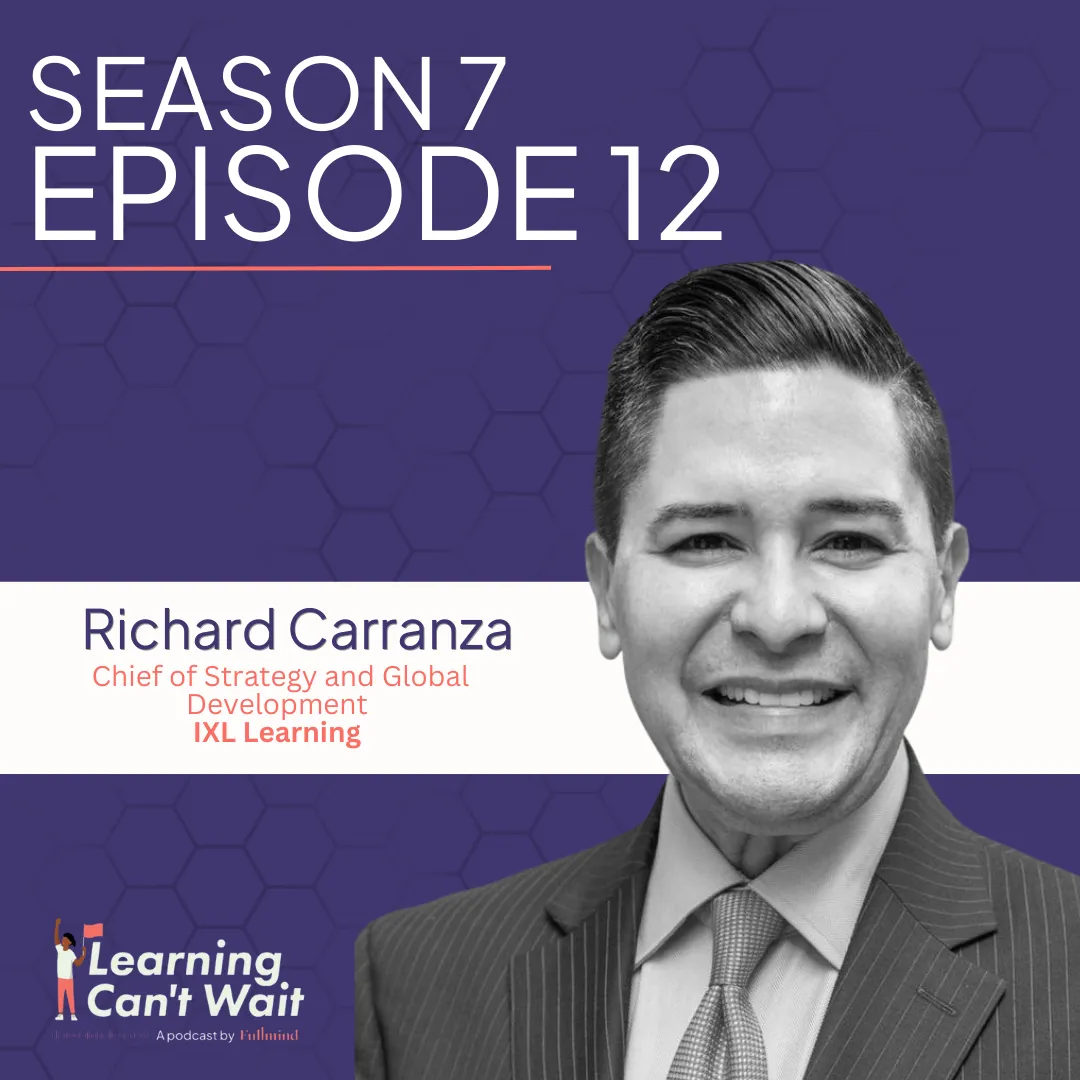For Education Leaders
Get proven strategies and expert analysis from the host of the Learning Can't Wait podcast, delivered straight to your inbox.
Virtual Staffing
Fill Teacher Vacancies in Days
- State-certified experts averaging 15+ years experience
- Fully aligned to your curriculum & standards
- Scalable, cost-effective hybrid solutions
HR Advice from Schools: 25 Tips For Administrators

Managing the human resources of a school comes with large responsibilities and brings unique challenges. From hiring the right teachers to ensuring their wellbeing, there is a lot of burden on school HR professionals and teams. Meanwhile, running smooth and efficient processes at educational institutions is of crucial importance for upbringing future generations and teaching them the necessary technical skills and personal competencies. On top of that, the quickly changing reality is forcing HR to continuously adopt and adapt to new systems and technology.
If your HR team is struggling to find the right teachers or fill vacancies quickly, Fullmind can help. Our virtual staffing services connect schools and districts with state-certified, highly qualified K–12 educators—often in as little as two weeks. Reach out today to discuss your needs and keep your classrooms running smoothly.
To help you manage the human resources at your school efficiently, this article brings together the top HR advice from schools. These proven strategies offer feasible and practical solutions to some of the most pressing issues in the educational system. They are easy to implement and guarantee well-structured processes at your school, without unnecessary tension and friction.
The 25 best tips for school HR teams are:
1. Ensure Legal Compliance
First and foremost, it is the responsibility of the HR team to be aware of all applicable federal and state regulations and comply with them. This concerns both general labor laws and specific education policies.
Being compliant with legal regulations will ensure the protection of the rights of all employees at the school, which is a necessary step for building a happy workforce. In addition, it will help you avoid problems with law-enforcement authorities which might result in hefty fines or other procedures against the school.
It is important to regularly update yourself on employment laws and education regulations as they might occasionally change, both at the federal and the local level. With each adjustment, you need to review your HR policies, handbooks, and contracts to be compliant with current policies.
2. Hire with Scrutiny and Attention
To have a solid labor force at your school, it all starts with recruiting the right teachers and other staff, which requires a strong, well-organized process. The most important components of the teacher recruitment process include:
- Creating detailed job descriptions with clear requirements and responsibilities
- Drafting compelling job ads that will attract top teachers
- Distributing the job announcement across different websites including education job boards and LinkedIn
- Asking for referrals within the district and your network of education professionals
- Carefully screening short-listed candidates and implementing detailed background checks (to guarantee the safety of students and the rest of the staff)
- Asking the right questions during the job interviews
- Assigning a test teaching task to the best candidates
- Talking to references to ensure the right fit within your institution’s values and standards
- Making an irresistible offer that includes attractive monetary and non-monetary compensation and incentives as well as in-depth description of responsibilities and performance expectations
By following these steps, you should be able to hire top-quality teachers even amid the current reality of overwhelming teacher shortages. If you’re finding it particularly difficult to hire for a certain position, you can try looking for J-1 teachers via a sponsor organization, such as Cultural Vistas, Educational Partners International (EPI), and Global Teaching Partners. Just make sure to follow the legal requirements of the program.
Importantly, when recruiting instructors, make sure you are not in a hurry to quickly fill vacancies but rather take all the necessary time to choose the right candidates. This will boost long-term commitment, reduce employee turnover, and bring the expected level of expertise and professionalism to the classroom. To do this, it’s important to foresee future recruitment needs and start working on filling them early enough.
3. Resort to the Help of Recruiting Firms
Considering how difficult it is to find qualified, state-certified teachers, your school might need to seek assistance from one of the best teacher recruiting firms. There are numerous agencies that specialize in hiring teachers and other education professionals for schools. Through their access to a nationwide network of qualified educators and well-established recruitment processes, these firms are often able to help you save time while recruiting top talent for your school without inflating the overall hiring cost.
To optimize results, it’s key to work with the best recruiting firm for your school’s specific needs. Following are the main criteria based on which to choose the right agency:
- Company history and mission
- Scope of HR services
- Proven track record of successful hires
- Expertise in hiring for different teaching positions
- Typical profile of previous hires
- Recruiting timeline
- Online reputation and customer reviews on reputable third-party websites
Some of the top recruitment firms for teachers are Fullmind, Elevate K-12, Stride, Teachers on Call, and Educator’s Ally. Still, you need to put effort into locating the right choice for your school.
4. Consider Virtual Staffing for Difficult-to-Fill Vacancies
Another top HR advice from schools is to give virtual staffing a try in case you are not able to hire traditional, classroom teachers for certain positions. With the advancement of education technology, virtual staffing is becoming an increasingly more popular alternative to recruiting instructors in the conventional way. It provides you with access to qualified teachers in all subjects and grade levels, without geographical boundaries.
For instance, Fullmind virtual staffing services help districts fill teacher vacancies in public and private schools in all US states and regions. All Fullmind instructors are state-certified for the subject(s) that they teach and trained in online education best practices for effective material delivery and student communication. Instruction is live and synchronous, which means that students benefit from real-time interactions with teachers that closely mimic experiences at traditional brick-and-mortar schools.
With Fullmind, you can fill K-12 teacher vacancies in all core and many elective subjects within two weeks for an undisturbed educational process.
5. Employ Staff Trained in Special Education
To meet the needs of all students at your school, you need to hire special education teachers who are specifically trained to work with students with different needs and disabilities. Employing special education staff should be an integral part of your employment agenda and undergo best practices in the field.
Alternatively or additionally, you can consider providing training to existing teachers on working with students with special needs. This approach has important benefits as you are already familiar with the strengths and potential of instructors and can select the most appropriate candidates for this new qualification. Moreover, it will contribute to creating a culture of professional support and advancement and continuous learning for your staff, which we will come back to in consecutive tips for school HR teams.
Either way, you need to have personnel prepared to meet special education requirements within your school to avoid teachers’ having to deal with situations for which they are not properly trained.
6. Develop an Effective Onboarding Process
Establishing an excellent workforce at school does not end with recruiting the top talent within the district; that’s just the first step. Next, you need to take care of effective new hire management to make sure that teachers get started on the right footing, are provided with everything they need to succeed in their position, and stay in the long term.
You need to put in place a comprehensive, yet not overwhelming onboarding process that introduces new employees to other teachers and administrators, the school guidelines and HR policies, and the software apps and systems used within the institution.
The stages of an effective onboarding procedure include:
- Pre-arrival preparation that provides a welcome package, introduction to the school code of conduct, office setup, and technology setup
- School orientation on day 1 that covers a school tour and department and administration meetings
- Settling in during week 1 that incorporates classroom setup help, curriculum and planning meetings, and daily check-ins
- 3-month probation period during which you regularly check up on new teachers and provide them with the tools they need to succeed and commit in the long term
7. Work Out Detailed HR Policies
Your school HR department needs to create a clear set of HR policies, guidelines, and code of conduct that are organized in written, detailed documentation. The HR policies should outline the rights and responsibilities of each staff member, the rules by which they need to comply, the reporting they need to do, and the mechanisms they have at their disposal to deal with challenging situations.
New hires need to be immediately introduced to the HR regulations. Moreover, you should hold regular training sessions and workshops where you remind staff of the main rules and regulations as well as present any new updates in line with evolving federal and state laws or school practices.
8. Enforce Anti-Discrimination and Non-Harassment Rules
To provide a safe and productive environment for your labor force, you have to develop and implement strict anti-discrimination policies and anti-harrassment regulations. Both new teachers and those who have worked at your institutions for a while should know that they are respected and valued on the basis of their qualities, expertise, experience, and merits and are protected against any sort of discrimination or harassment.
This starts with inclusive hiring policies that aim to recruit the most capable professionals regardless of their race, gender, age, or other irrelevant trairs. Additionally, your HR policies should integrate clear non-harassment rules and specific measures that would be taken in such ocassions.
9. Train Instructors in Cultural Competency and Diversity Awareness
Besides hiring instructors who are aware and appreciative of cultural diversity, you have to put further effort into providing regular training in this regard. Such training has to be developed in line with the local environment and the specific situation of your district and school. District-level training is especially appropriate in this case as schools in the same district are likely to face similar realities. This calls for effective cooperation among HR teams within the district.
The ultimate goal of this exercise is to make sure that both staff and students of diverse backgrounds feel an integral part of the school body and do not feel discriminated against in any way. This is a chief element of creating a positive school environment where everyone is allowed to thrive without any fears.
10. Educate Teachers on Conflict Resolution and Classroom Management
Regardless of the hard work that you do as an HR team, it is impossible to prevent all conflicts and unpleasant situations inside and outside the classroom. Chances are that sooner or later some teachers and other staff members might end up in a disagreement with colleagues or students.
Thus, you should offer compulsory training on best conflict resolutoin practices for educational institutions as well as up-to-date classroom management strategies for productive learning and student engagement. This will equip personnel with the skills and tools to handle different types of potentially negative situations, help avoid growing adversities, and ensure smooth processes for the benefit of all stakeholders.
11. Find Successful Alternatives to Suspension to Help Teachers Handle Different Situations
As part of the classroom management methods, you need to provide teachers with effective alternatives to suspension to help them deal with students who have clearly broken the school code and need corrective measures. Frequently instructors end up in situations that they are not properly equipped to handle as traditional suspensions are proven inefficient but students still need to be disciplined in a way.
Together with the rest of the administration and the faculty, the HR team can work on developing suspension alternatives that empower teachers to work with challenging students in an effective manner. Some common examples include:
- Virtual suspension room (Fullmind core instruction services offer individualized support as an alternative to traditional suspension)
- Restorative justice
- Restitution
- Social emotional learning
- Positive behavior interventions and supports
Most of these strategies require additional training that HR should offer to teachers as part of professional development options.
12. Set Up Clear Expectations and Goals for Your Personnel
Another proven tip for the success of school HR teams is to establish thorough, yet straightforward expectations and objectives for all staff members. You need to discuss objectives with candidates during the recruitment process and make sure that they are ready to commit to your goals and requirements. Specific objectives need to be set up for new hires as part of the onboarding process. Finally, objectives need to be updated on a quarterly or annual basis with clear mechanisms to track progress on them throughout the academic year.
In this sense, running a school is not so different from managing any other business or organization. All employees need to know what exactly is expected from them and how it will be reported and measured. This helps ensure that everyone is doing their part of the job, contributing to the overall success of the educational institution. Moreover, it helps avoid unpleasant surprises down the road.
13. Use the Right School-Focused HR Software Tools
Another piece of HR advice from school teams is to take advantage of existing HR software tools and apps that help streamline and even automate a large portion of the work of your human resources professionals, from hiring, to managing evaluations, to handling promotions and anything in-between. While HR requirements might be getting increasingly complex amid new labor laws and education developments, the best HR services and software solutions for schools facilitate the bulk of HR processes.
Some top school-specific HR software platforms include:
- Frontline Education for overall HR management
- NEOED for HR automation
- Lanteria for all-inclusive HR services
- ExtensisHR for adaptive HR tools
- OpenEduCat for an open source HR solution
Whatever software you choose to implement at your school, always prioritize digital security. Go for trustworthy platforms that keep your employee and student data safe and well protected.
14. Deploy Regular Formal Evaluation Procedures
Schools need to implement continuous evaluation of the teaching and administrative staff to ensure that all educational and other goals are achieved and that all staff is progressing. It is the responsibility of the HR team to develop a clear evaluation system that includes both formal evaluations and informal opportunities to provide feedback.
Formal evaluations should be conducted on a quarterly basis. It’s crucial that staff is familiar with their goals for each quarter as well as for the academic year as a whole and with the specific evaluation criteria based on which their work will get measured. Evaluation procedures should be transparent and aim to provide teachers with the feedback and processes they need to achieve their full potential for the benefit of students and the institution.
15. Offer Continuous Constructive Feedback
In addition to regular formal evaluations, school instructors also need to have access to ongoing feedback from peer teachers, administrators, and even students. While constructive feedback is an indispensable part of the onboarding and settling in process, it should not end with the completion of the probation period.
Employees perform better and attain higher results when they receive continuous feedback from colleagues, supervisors, and administration. However, as HR personnel, you should be careful to structure feedback as a positive practice rather than an overbearing feeling that you are constantly observed and judged. A friendly and positive tone should be used at all times.
16. Build a Positive Culture of Openness and Support
One of the most successful pieces of HR advice from schools is to show teachers that feedback is not a one-way street; to the contrary, it’s a reciprocal process from which everyone at the school can benefit. You should put active effort into establishing a positive work culture that encourages open communication and support to everyone.
In this regard, educators as well as other staff members need to be supplied with mechanisms through which they can share their feedback on administration and colleagues in addition to applicable rules and regulations. Teachers need to know how to report problematic situations and that they will receive the assistance they require to resolve them. Furthermore, it’s important for employees to understand that their opinions matter and will be heard and taken into consideration when improving the work culture and the educational environment for all those involved.
17. Give Teachers Access to the Best Technology and Tools
Another key HR tip for schools is to provide instructors with the technology that they need to facilitate their work and improve the quality of education and instruction they deliver to students. Technology is gaining an increasingly larger role in education, and online education practices are being implemented even in traditional schooling setups. Technology is the future of education, there is no need to deny that, and thus teachers should be equipped with the right tools to empower them to use technology in the most effective ways in their classroom.
School administrators should supply instructors with both hardware devices and software apps that assist the educational process. On the hardware side, this includes computers, sound systems, projectors, smartboards, and a wide range of other tools that vary based on the subject and the grade level. In terms of software, there are hundreds of free and paid apps and platforms that offer interactive educational materials, evaluation tools, communication solutions, and student progress tracking options.
HR and administrators should encourage teachers to use available tools and help them choose the most appropriate, effective, and safe platforms for their specific needs. Older, more traditional teachers might also need training in the use of education software platforms to boost the learning process for students and make it more up-to-date.
18. Make Sure Teachers Do Not Get Overworked
Another major responsibility of school HR teams is to ensure that instructors and other staff members do not get overworked and exhausted. Teacher burnout is a prevalent problem across the US educational system, which, on the one hand, is mostly caused by teacher shortages and which, on the other hand, further exacerbates teacher shortages as more and more professionals drop out of the teacher workforce because of burnout and newcomers are discouraged from joining.
To achieve this, HR needs to ensure compliance with federal and state regulations with regards to working hours and class load. It doesn’t make sense to put all the necessary effort into hiring the best teachers statewise and destroying their capabilities and motivation by overloading them and burning them out in a few short months. Once you’ve been able to find good talent, you should take care of them to retain them for the long haul.
19. Allow for a Good Work-Life Balance
As part of taking good care of employees, the school administration and HR team should ensure that teachers and others can achieve a satisfactory work-life balance. While the teacher profession is highly demanding, instructors should not spend all their time at school and go back home too exhausted to spend time with family or friends and pursue their hobbies and other interests.
This requires a comprehensive approach to teacher wellness that includes deciding on the right working hours, balancing the size of classes, and also providing access to wellness programs and opportunities within the school. For example, teachers should be offered free mental health through school psychologists and social workers.
This will help retain the best teachers in the long run and have them work at their full potential instead of offering suboptimal educational services because of overexhaustion, stress, and struggling to have any personal life outside the school.
20. Provide Opportunities for Professional Development
While professional development is a legal requirement for teachers, it is something that HR can really help with and offer as an additional benefit to teachers. Supporting instructors in improving their skills and staying updated on recent trends in the educator profession will make them feel valued and fulfilled as well as willing to give their best inside the classroom and beyond.
There are plenty of affordable and even free professional development opportunities for teachers that can easily be implemented at the school level. Some examples include:
- Education podcasts for teachers and school admins (the Fullmind podcast Learning Can’t Wait gives teachers access to professional development hours and can be used as a group activity to provide teachers with access to practical ideas and innovative solutions)
- School, district, and state seminars and webinars
- In-person and online workshops
- Subject-related and general teaching training
- Time off to attend courses
The best HR practices for schools offer incentives as well as time and financial assistance to teacher to take part in professional development that helps them stay up to date on the latest trends in the profession and also provide continuously more relevant services to students.
21. Encourage Teachers to Attend Conferences and Other Industry Events
Another easy-to-implement HR advice from schools is to not simply allow but actually motivate teachers and administrators to participate in educational conferences and events. Various organizations and institutions organize diverse education-related expositions, conferences, and workshops to meet the needs and interests of educators in different subjects, at different grade levels, and in different states.
Your HR policies should allow for study leave and financial aid to help teachers and other staff members attend relevant industry events. This will give educators the chance to not only break the routine and unwind but also gain new knowledge and access practical tips to take straight back to the classroom. You should view conferences and workshops as professional development for your staff rather than a waste of time.
22. Nominate Your Staff for Educational Awards
Moreover, one very effective tip for school HR teams is to make it a practice to nominate teachers and admins from their institution for applicable top teacher and educator awards. There are dozens of awards, fellowships, and other programs that aim to recognize and reward distinguished teachers and school administrators that go above and beyond for their students, colleagues, institutions, and districts. Many of these awards require a nomination by fellow teachers or school.
Nominating your staff gives you the unique opportunity to show them how much you value their work and effort inside and outside the classroom and that you are willing to go the extra mile to demonstrate your appreciation. Even if they don’t win the award, the mere fact that they were nominated and potentially invited to attend the ceremony will boost their motivation and encourage them to perform even better.
23. Introduce Opportunities for Career Advancement
In addition to offering professional development opportunities, it is a good idea to construct a structured career advancement path within your school. Teachers should know that gaining new skills and qualifications will not simply fulfill the state requirements but could actually lead to tangible gains at the workplace.
For instance, you can have clear guidelines and requirements how a substitute teacher can progress to a full-time position or how a teacher’s aide can become an accredited teacher through additional education and certification. The path to tenure should be equally transparent and attainable for those who put the necessary effort into it.
Employees who see how their work gets rewarded with career advancement, financial remuneration, and other benefits feel motivated to continue pushing forward and giving their best.
24. Instigate Collaboration and Partnership Between Employees
As HR, it is your responsibility to create the necessary mechanisms for building a positive atmosphere of cooperation and support across the school. While a small degree of healthy competition among teachers might be a good thing, you should encourage instructors and admins to work together and collaborate to achieve the best possible outcomes for the faculty body and students alike.
For example, you can work on teacher mentorship programs for new hires where they benefit from the expertise of more experienced coworkers. Similarly, you can launch peer collaboration opportunities where teachers work on the schedule, classroom plans, homework, and test assignment together.
The sky’s the limit when it comes to how you can inspire collaboration between teachers. The key for success is to clearly show the many benefits that come with partnerships and bringing efforts together.
25. Inspire Cooperation Between Teachers and Parents
The last piece of HR advice from schools is to provide channels for collaboration between educators and parents. After all, teachers and parents are two of the most important players in the education process, which should be seen as a holistic approach combining work at school and practices at home. Teachers, parents, and - most importantly - students have a lot to gain from the combined work of these two groups.
To achieve this, the HR team should secure clear communication channels and mechanisms for regular exchanges between teachers and parents which, however, do not overwhelm the former. While parents should be able to stay in touch with their children’s educators, they should follow certain principles and practices to not exhaust teachers with incessant questions and comments or, even worse, make them feel unsafe or threatened.
In addition, the school administration needs to organize regular parent-teacher conferences where the two parties are given the opportunity to sit together and discuss various questions as well as individual students’ performance in detail.
Finally, you can create additional mechanisms for educators and parents to work together, such as open days and parent volunteer programs.
Bottom Line
Having the right HR policies and mechanisms at your educational institution is of crucial importance for achieving the main objective of the school, namely providing students with quality education through qualified and motivated teachers. With these 25 practical HR advice from schools, you should know what it takes to find good educators, provide them with the tools to succeed, and retain them in the long term. From recruiting, through professional development, to evaluations, all parts of your HR strategy should come together and work together seamlessly to bring the best possible results for teachers, admins, students, and parents.
If your HR team needs help in finding the best talent amid teacher shortages, check out Fullmind virtual staffing services. Fullmind helps districts fill K-12 teacher vacancies with state-certified, highly qualified professionals trained in online education. Get in touch to discuss the needs of your district and find top candidates within two weeks.
For Education Leaders
Get proven strategies and expert analysis from the host of the Learning Can't Wait podcast, delivered straight to your inbox.
Let’s Work Together
We’ll review your application and get in touch!




.webp)













.webp)



























.webp)



%20.webp)




































.webp)




.webp)


.webp)


.webp)
